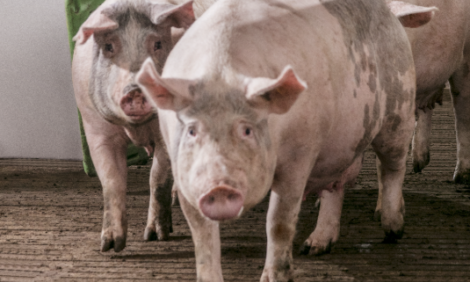



FAO Food Price Index Falls Again
GLOBAL - The FAO Food Price Index averaged 182.7 points in January 2015, down 3.6 points (1.9 per cent) from its revised* (reduced) December 2014 value. While prices of sugar and dairy products stayed virtually unchanged, those of the other commodities included in the Index fell in January, with cereals and oils registering the strongest declines.
While prices of sugar and dairy products stayed virtually unchanged, those of the other commodities included in the Index fell in January, with cereals and oils registering the strongest declines.
Except for a short-lived respite in October 2014, the FAO Food Price Index has been falling every month since April 2014.
The FAO Cereal Price Index averaged 177.4 points in January, down 6.6 points (3.6 per cent) from December.
This marked decline was mostly driven by a seven per cent reduction in international wheat prices, as coarse grains and rice subsided by only one per cent or less.
The sharp fall in wheat prices reflects confirmation of an ample supply situation this season and stronger likelihood of inventories reaching their highest level in over a decade.
At its current value, the FAO Cereal Price Index has fallen to its lowest since July 2010 and is now as much as 90 points (34 per cent) below its peak (267.7 points) in June 2008.
The FAO Vegetable Oil Price Index averaged 156.0 points in January, down 4.7 points (2.9 per cent) from December and its lowest level since October 2009.
Prices of both palm and soy oil fell, reflecting weak import demand for palm oil and prospects of ample soybean supplies. Furthermore, the lingering weakness in crude oil prices continued to weigh on vegetable oil quotations by eroding the competitiveness of vegetable oils as biodiesel feedstock.
The FAO Dairy Price Index averaged 173.8 points in January, essentially the same level as in December. A decline in prices for cheese and skimmed milk powder was counterbalanced by a rise in the price of butter, while whole milk powder was unchanged.
The fall in the value of the Euro has caused export quotations from Europe to converge with offerings from Oceania and the United States.
The arrival of new supplies to the world market is being tempered by dry weather in Oceania, which is leading to an accelerated decline in seasonal milk production, while output in the European Union as a whole has been curbed to avoid over-quota levies, as the April-March quota year draws to a close.
 The FAO Meat Price Index averaged 194.3 points in January, down 3.2 points (1.6 per cent) from its revised December value.
The FAO Meat Price Index averaged 194.3 points in January, down 3.2 points (1.6 per cent) from its revised December value.
Falling currency exchange rates relative to the United States dollar, especially the Euro, were partly responsible for the decline.
The main products affected were pig meat from Europe, bovine meat from Australia and ovine meat from New Zealand.
Additionally, abundant export availability continued to weigh on pig meat prices.
The downward revision of the Meat Price Index for December, from 204.0 points published last month to 197.5 points, was mainly caused by an unanticipated sharp fall in export prices for Brazilian pig meat and to a lesser extent Brazilian poultry.
The FAO Sugar Price Index averaged 217.7 points in January, virtually unchanged from December 2014. Uncertainty ahead of the new Brazilian sugar harvest, which normally begins in April, sustained export prices.
However, its effect on the index was largely neutralised by expectations of ample supplies in the major sugar producing areas, including India, Thailand, and the EU.
Unlike for other commodity groups, most prices utilised in the calculation of the FAO Meat Price Index are not available when the FAO Food Price Index is computed and published; therefore, the value of the Meat Price Index for the most recent months is derived from a mixture of projected and observed prices.
This can, at times, require significant revisions in the final value of the FAO Meat Price Index which could in turn influence the value of the FAO Food Price Index.






